

Louisiana Country
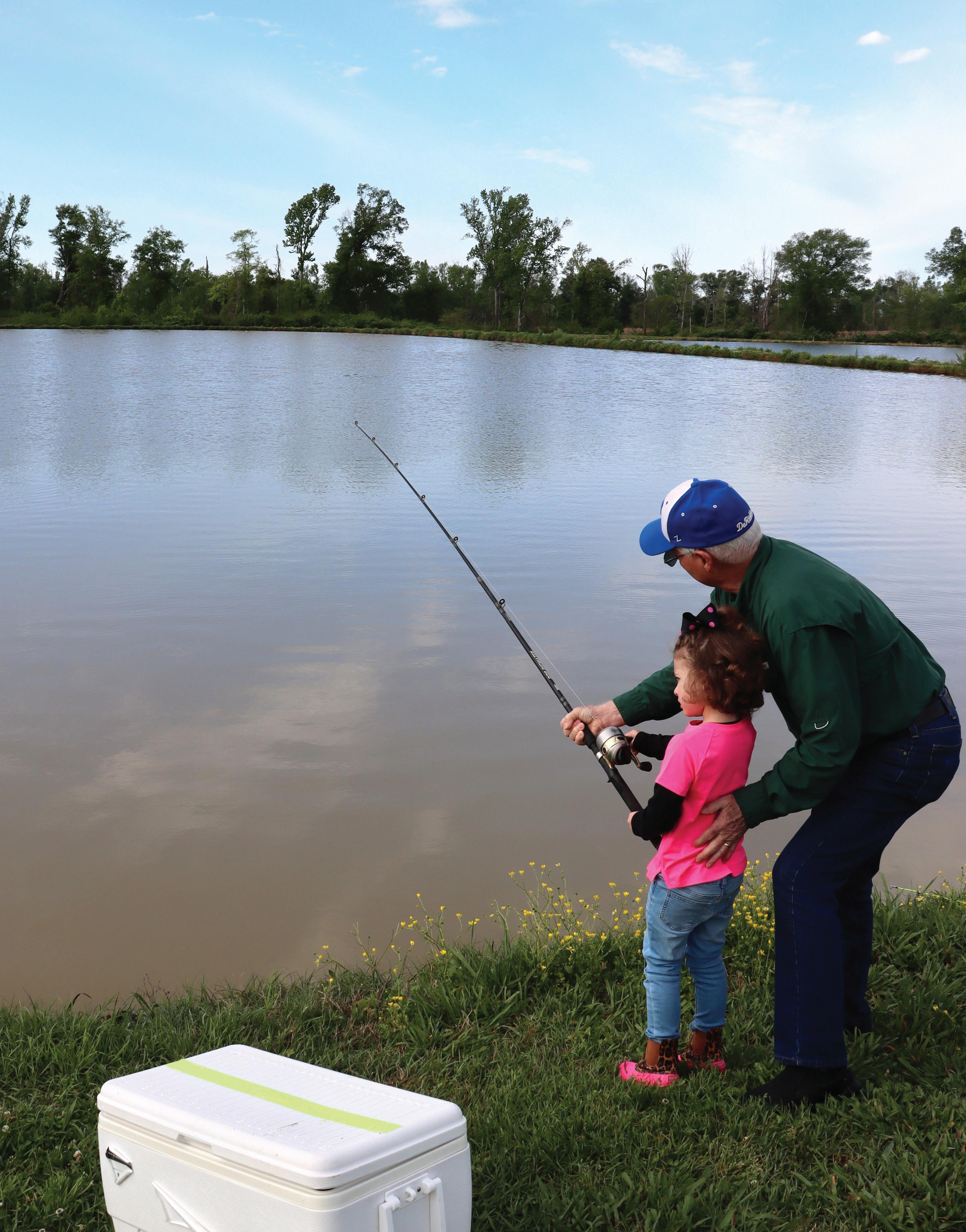

A Reel Fun Time

Sunrise Catfish Farm provides entertainment for fishing enthusiasts
Page 20
Beauregard Electric Cooperative Inc. member Charles Barfield and his great-granddaughter, Allynder Beard, fish from a pond at Sunrise Catfish Farm in DeRidder. PHOTO COURTESY OF BECI














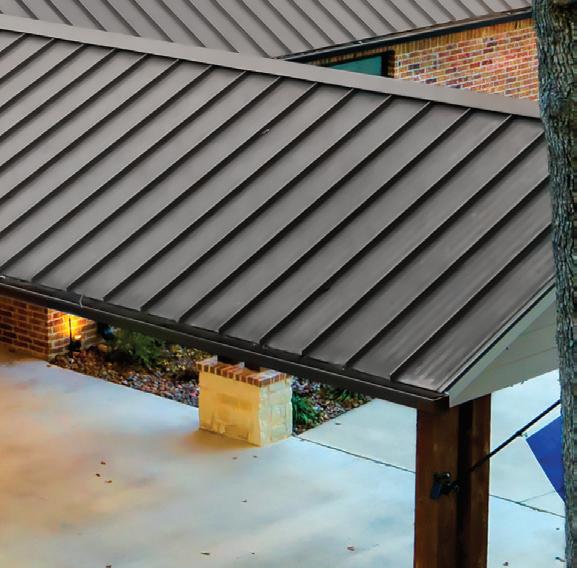




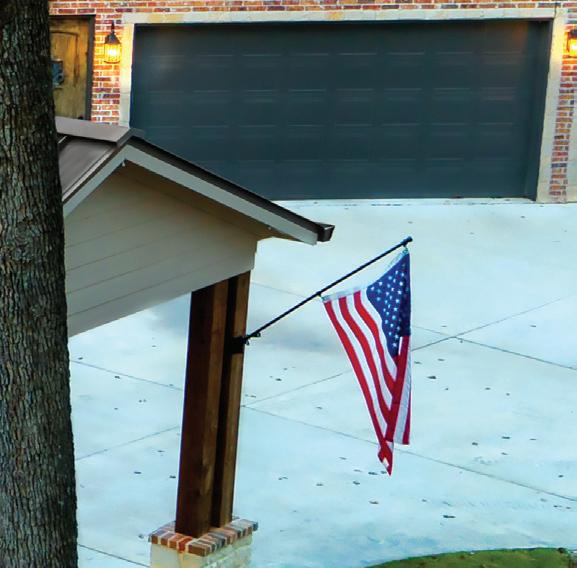









































How Energy Policy Impacts You
It is no surprise that today’s energy industry is ever-changing. Louisiana electric co-ops are leaning into change as we explore new ways to meet our members’ ever-changing needs adequately and efficiently.
The primary responsibility of electric cooperatives is to our member-owners. This responsibility extends beyond merely ensuring the lights come on when the switch is flipped. Cooperatives remain committed to providing safe, reliable, affordable electric service while simultaneously adopting energy policies that further these goals.
Speaking to reliability, the North American Electric Reliability Corp., the watchdog for the nation’s grid, has issued several warnings about threats to grid reliability. Specifically, NERC warns rolling blackouts will become a new norm. To that end, nine states experienced blackouts in 2022 when electricity supply could not meet demand.
Over the next five years, NERC forecasts that all or parts of 19 states from Montana to Louisiana are at high risk of rolling blackouts during normal peak conditions. NERC’s 2023 Summer Risk Assessment will come out later this month.
Against this backdrop, electric cooperatives are pressing policymakers to recognize the need for more time, technology development and new infrastructure, alongside policies that include diverse energy sources to maintain reliable power.
As is evident in today’s society, the economy
continues to rely heavily on electricity. From data centers and manufacturing to electric vehicles and electric heat pumps, electricity demand is set to rise dramatically.
Electric co-ops are planning for this surge in demand by investing in infrastructure to make it more reliable and resilient. Additionally, cooperatives are applying for grants with the Department of Energy.
In addition to grid investments, cooperatives around the state continue to implement new technologies such as automated metering infrastructure and outage reporting systems. Louisiana electric cooperatives have also signed new wholesale power supply contracts that will change how cooperatives buy the power we distribute to you, our member-consumers.
Despite this increasing electricity demand, many power plants that generate alwaysavailable electricity are being shut down without adequate replacements, posing a significant threat to reliability. The Environmental Protection Agency is pursuing sweeping new regulations that would force the premature closure of always-available power plants while making permitting, siting and building critical new plants harder.
Electric co-ops have urged the EPA to withdraw these proposed regulations, which could lead to more blackouts, higher costs and uncertainty for cooperative members.
To ensure electricity remains safe, affordable and reliable, electric co-ops are at the forefront of innovation and are already adapting to the
Association of Louisiana Electric Cooperatives Inc.
Staff
CEO Addie Armato
DIRECTOR OF LOSS CONTROL Aarron Graham
SAFETY COORDINATOR Ricky Melancon
COMMUNICATIONS AND DIGITAL MARKETING
SPECIALIST Conley Bourgeois
ADMINISTRATIVE ASSISTANT Rhianna Garon
CREDIT UNION
Robin Plunket, manager
Jody Overhultz, representative
Board of Directors
President Dennis Glass
Vice President Michael Heinen
Secretary/Treasurer Roger Dale DeHart


Trent Buxton
CLAIBORNE ELECTRIC COOPERATIVE INC.
Mark Brown Lane Davidson
DEMCO
Daniel Berthelot Richard “Dickie” Sitman
JEFF DAVIS ELECTRIC COOPERATIVE INC.
Michael Heinen Byron Hardee
SOUTH LOUISIANA ELECTRIC COOP ASSOCIATION
Trevor Benoit Roger Dale DeHart
WASHINGTONST. TAMMANY ELECTRIC COOP INC.
Joe Jarrell Dennis Glass
Associate Member

unique needs of the members we serve. Co-ops are leading the way by adding solar projects to their power supply portfolios and providing members with energy efficiency programs and cost-cutting tips.
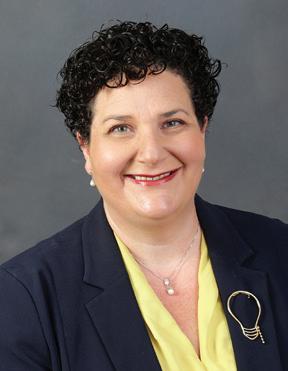
Last month, your Louisiana electric cooperative leaders gathered in Washington, D.C., for the annual Legislative Conference, where they met with members of Congress and federal agencies to discuss critical issues and concerns surrounding reliability.
Leaders of your Louisiana electric cooperatives educated policymakers on the issues that matter most to the Louisiana families and businesses we serve, such as our opposition to the EPA’s current power plant rule, protecting USDA funding for electric cooperatives, alleviating supply chain challenges, safeguarding the rural electric cooperative infrastructure and Federal Emergency Management Agency reform. Because energy decisions and policies made today determine whether there are enough resources to meet tomorrow’s energy needs, electric co-ops must continue advocating for their members to ensure a reliable supply of electricity that powers everyday life.
Source: www.nerc.com/pa/RAPA/ra/ Reliability%20Assessments%20DL/NERC_ SRA_2022.pdf#search=louisiana%20high%20risk
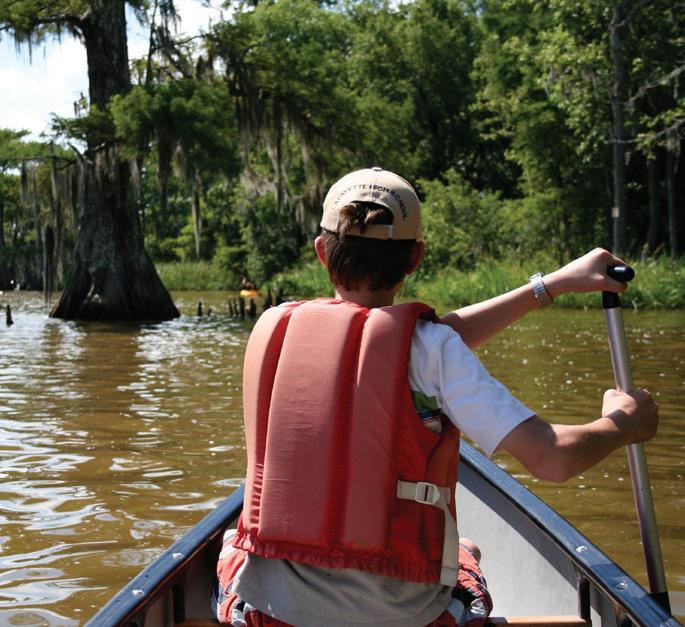
State of Adventure
Addie Armato




BOARD OF DIRECTORS
Donald Bush | District One
Ricky Deggs | District Two
J.R. Hickman | District Three
Alan Dane Slaydon | District Four
Joey Rogers | District Five
Trent Buxton | District Six
Doug Sonnier | District Seven
Diana Backhaus | District Eight
Tommy Cryar | District Nine
BEAUREGARD ELECTRIC CO-OP LEADERSHIP
Kevin Turner | Acting Interim General Manager
Kay Fox | Vice President of Marketing and Member Services
Ashley Mazilly | Vice President of Finance and Corporate Services
Kevin Aycock | Vice President of Engineering and Technical Services
Scott Deshotel | Vice President of Operations and Construction Services
BEAUREGARD ELECTRIC OFFICES
Main office
1010 E. 1st St.
DeRidder, LA 70634
Phone: 800-367-0275
Moss Bluff
975 N. Perkins Ferry Road
Lake Charles, LA 70611
Phone: 337-855-6684
New Llano
12542 Lake Charles Hwy. Leesville, LA 71446
Phone: 337-239-3451
BECi Celebrates Educators
Beauregard Electric Cooperative is grateful for the support of the educational community within our service area. Inside the classroom and out, educators show unwavering dedication and care for each child’s growth and development.
Each year, we trust our educators to inspire and teach future generations. We hope that through their guidance, their students will one day choose to join BECi, contributing to our legacy and fostering a brighter future for all.
BECi demonstrates its commitment and appreciation to the educational community by offering various programs and opportunities, such as the Partners in Education program. This initiative is designed to empower local teachers, thereby enhancing the overall quality of education for area students. The education system requires backing not only from parents and taxpayers, but also from the entire community, which includes the business sector.
The business community depends on a strong public education system to ensure a well-educated pipeline of future generations, contributing to economic stability within the community. BECi is a Partner in Education with South Beauregard Elementary, South Beauregard High School, Pitkin High School and Moss Bluff Elementary.
Collaborative efforts through the initiative have included safety demonstrations, teacher of the month recognitions, funding for robotics programs, and various celebrations surrounding the educators and students.
In addition to the Partners in Education Program, BECi offers six $500 mini-grants to educators from pre-K through 12th grade. These grants are available to educators teaching at schools within BECi’s service area or communities that are powered by the cooperative.
The mini-grants support the implementation of innovative educational programs within the classroom. Recipients are required to use the funds to buy the supplies necessary to fulfill the completion of the program, which may include computer software, manuals, tools or specialized equipment.
The Rural Electric Youth Tour is another program that engages the academic community in our area. In 1957, Sen. Lyndon B. Johnson, D-Texas, urged national electric cooperative leaders to bring young people to Washington, D.C., to get a firsthand look at how government works. The Youth Tour is an annual weeklong, allexpense-paid trip to Washington, D.C. It is open to sophomores, juniors and seniors across the BECi service area.
The trip to Washington, D.C., is worth more than $2,800 and awarded to four students each year who submit an essay. The essays are judged by an off-site individual and ranked. The application process begins in early winter and closes in February of each academic year.
To honor teachers, the first full week in May is designated as National Teacher Appreciation Week, with Tuesday celebrated as National Teacher Appreciation Day. BECi would like to thank the educators in the community for their invaluable contribution to children and society. Their dedication not only benefits our children and community, but also lays the groundwork for future BECi employees.
Thank you to all teachers and support staff.
Louisiana Country (USPS 473-180) is published bimonthly by the Association of Louisiana Electric Co-ops Inc., 10725 Airline Hwy., Baton Rouge, LA 70816, in partnership with Pioneer Utility Resources. Annual Subscriptions: Members $2.30. Nonmembers $5.
Postmaster: Send form 3579 to 10725 Airline Hwy. Baton Rouge, LA 70816.
You Could Win a $50 Bill Credit
Beauregard Electric offers its members an opportunity to win the co-op’s Lucky Account Number Contest by publishing four account numbers somewhere on pages 20-21 of Louisiana Country. The account numbers are listed within the story on those pages, not on the magazine cover. To win, you must locate your account number (listed on your electric bill) on these pages and then contact the co-op. To claim your prize, call 800-367-0275 or 337-463-6221 by June 15. Volume 41, Issue 3
Periodicals postage paid at Baton Rouge, Louisiana 70821 and additional mailing offices.

A Screen Door Childhood
“We’ll see you soon. Until then, we’ll leave the screen door unlatched for you.”
People ask why I end each YouTube video or podcast with, “In the meantime, we’ll leave the screen door unlatched for you.”
I’m not trying to be cute or borrow from some other tagline. It’s just that I love screen doors, and they were an essential part of growing up.
Since we moved out of the Old House in 1960, I’ve never lived in a house with real screen doors. I’m talking about a wooden screen door: lower half covered in hardware cloth, spring hinges with a strong inside hook latch.
The kind of door that went “whap” when you let go of it.
The Old House has 11 exterior doors, and nine have working screen doors.
I asked my elders, and no one can remember the exterior doors ever being locked. The keyhole locks were never used or useful, and no one had a key.
I’ve always had a love affair with screen doors. I still walk through the Old House, opening screen doors just to hear them flap.
How do you describe the sound of a screen door slamming?
I can think of several:
Wham.
Flap.
Bam.
Creak. Whack.
It’s hard to describe the sound because each of the nine screen doors at the Old House has its own personality and timbre.
Some of you may have never heard an old-time wooden screen door slam. All I can tell you is when you hear one, you’ll remember it.
It was one of the sweetest sounds of my childhood.
At the Old House, there are varying degrees of slamming. There are a few slam trackers that will literally hit you on the backside if you don’t get out of the way. I call them mousetraps, as in, “Don’t let the screen door hit you on your way out.”
Among the nine screen doors at the Old House, there are several lazy boys. We call them lazy boys because the hinge springs are worn and loose. They yawn as they leisurely close, making only a slight tap on the door jamb.
The Old House had no central heating/cooling. It sits on the edge of Crooked Bayou Swamp, so keeping the screen doors latched was necessary due to mosquitos and other insects. Due to that, most of the screen doors stayed latched. If you wanted to get chewed out, leave a screen ajar. It was the cardinal sin of mosquito control.
“Shut that door behind you.”
The latches were simple hook and eye. They weren’t always easy to latch due to misalignments of the screen, door and door jamb.
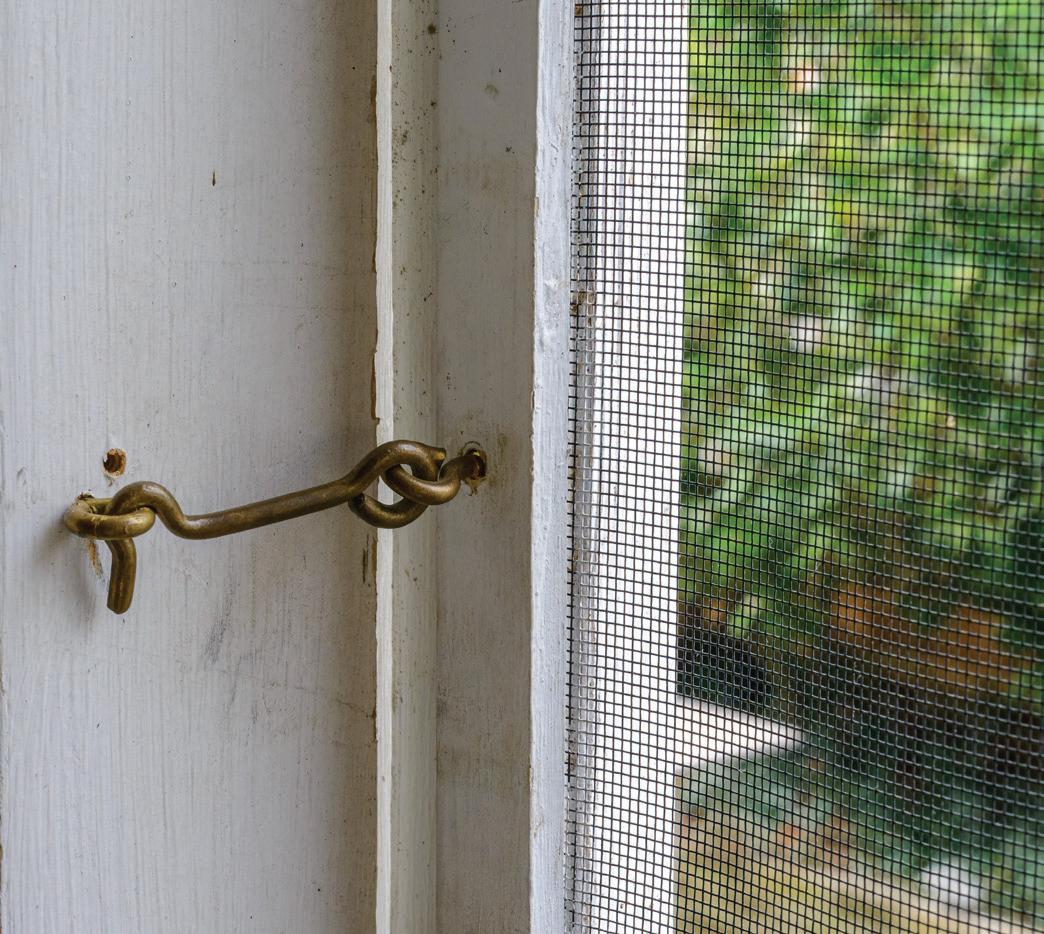
Because the screens were often latched, as a boy, I often made wide circles around the porches, pulling on screen doors.
The screen doors were a particular challenge at night. The older folks, being early risers, were “latched and lights out.”
Every screen would be latched. A few could be opened with a pocket knife, but you ran the risk of damaging the latch or door jamb.
You would have to make some noise to awaken someone. You call out softly, hoping someone will hear you above the window fan.
You can rattle the door, but that will awaken half the house. A shaken screen door makes a really irritating sound, and whoever gets out of bed to unlatch it will be irritable, too.
So you wanted one screen door unlatched.
My MaMa Pearl, who loved me with all of her heart, would leave the middle room door unlatched so I could slip in sometimes undetected.
“Baby, is that you?”
“It’s me, MaMa. Thanks.”
“Goodnight, Baby.”
And that’s why I end each podcast with, “We’ll see you soon. In the meantime, we’ll leave the screen door unlatched for you.”

Curt Iles lives in Central Louisiana. He is the author of 11 books about rural Louisiana. Curt is a graduate of Louisiana College and McNeese State University. He has served as a teacher, coach, school principal, camp director, missionary, and full-time writer and speaker. To see more work by Curt, visit www.creekbank.net.
The sound of a screen door hitting the door frame is a sound of childhood for some. ADOBE STOCK IMAGE BY WILLIAM A MORGAN

Louisiana Electric Cooperatives Attend NRECA’s PowerXChange


From left are Association of Louisiana Electric Cooperatives CEO Addie Armato, South Louisiana Electric Cooperative Association General Manager Matthew Peters, National Rural Electric Cooperative Association COO Jeffrey Connor, DEMCO CEO Randy Pierce, NRECA President Jim Matheson, Jeff Davis Electric Cooperative CEO Michael Heinen, Panola-Harrison Electric Cooperative General Manager Austin Haynes, Washington-St. Tammany General Manager Dane Hocott and Danny Berthelot who serves as a board member for NRECA, DEMCO and ALEC.
Louisiana voting delegates attend NRECA’s general session during PowerXChange in San Antonio.
Addie with 2023 Youth Leadership Council Representative Gavin Bernard from Washington-St. Tammany Electric.
Apply Today for a $500 College Scholarship
Altec, Altec Capital, Altec Truck, Altec Sentry, JJ Kane, Osmose and Tempest will award seven $500 scholarships for fall 2024 at the Association of Louisiana Electric Cooperatives’ annual meeting in July.
The following rules apply:
• Applicant must be the child of an ALEC member cooperative, including Beauregard Electric, Claiborne Electric, DEMCO, Jeff Davis Electric, Panola-Harrison Electric, South Louisiana Electric or WashingtonSt. Tammany Electric.
• Applicant must be a 2024 high school graduate.
• Applicant must provide verification of a minimum 2.0 GPA before scholarship is awarded.
• This is a one-time award.
• The award can be used for any college or university.
Application and current transcript must be postmarked by June 30, 2024. Altec is not responsible for mail delivery. Mail to Ed Amedee, 1443 City Place, Gonzales, LA 70737.
Name of applicant: ______________________________________
Name of parent or guardian: ______________________________
Member co-op: _________________________________________
Address: ______________________________________________ City: ____________________________ Zip code: ___________
Phone number: ________________________________________
Name of high school: ____________________________________
Help Fund a Scholarship, Gain a Chance to Win!
Donate $1 to the Sandy Stockwell Cooperative Youth Leadership Scholarship Fund, and you could win a portable Hisencn flat top propane grill.
To buy a ticket, visit your electric cooperative.
The drawing is in July at the Association of Louisiana Electric Cooperatives’ annual meeting banquet in Baton Rouge.
You do not need to be present to win. The winner will be contacted by phone.





BECi Annual Meeting Prize Winners Announced
The Beauregard Electric Cooperative Inc. annual meeting was March 23 at the BECi office in DeRidder.
A special drawing for door prizes included:
• One $85 bill.
• Nine members received one credit of





$85 toward their April bills.
• One member received nine credits of $85 each toward their April through December bills.
• Seven ferns from Glass Flowers.
• One Easter floral arrangement from Glass Flowers.

BECi Congratulates Scholarship Winners
The cooperative awarded 15 scholarships to students who are attending college or are graduating seniors.
These students are Beauregard Electric Cooperative Inc. members who have had service with the co-op for more than a year.
Scholarship winners are Hillarie Gallien, Jack Granger, Ava Jeans, Maggie Burgess, Trent Hudson, Lelia Chastain, Andy Burnaman, Jesse Chisholm, Samantha Bailey, Karen Garcia, Kade Royer, Aaron Thompson, Kyle Tinnel, Isaac Reed and Jacelyn LeJeune.
BECi would like to congratulate all winners and thanks those who attended the annual meeting.





FEELING REJUVINATED


Everyone feels the hurt as you age, but CBD can help you deal with it.
BY BETH GILES
Life really does y by. Before I knew it, my 60s had arrived, and with them came some new gi s from dear ol’ Mother Nature—frequent knee pain, stress, low energy and sleeplessness. Now, I’m a realist about these things, I knew I wasn’t going to be young and springy forever. But still, with “golden years” nearly on my doorstep, I couldn’t help but feel a little cheated. at is until I found my own secret weapon. Another gi from Mother Nature. It began a few months back when I was complaining about my aches and pains to my marathon-running granddaughter, Jen. She casually mentioned how she uses CBD oil to help with her joint pain. She said that CBD gave her more focus and clarity throughout the day and that her lingering muscle and joint discomfort no longer bothered her. She even felt comfortable signing up for back-to-back marathons two weekends in a row this year. at made even this self-proclaimed skeptic take notice.
But I still had some concerns. According to one study in the Journal of the American Medical Association, 70% of CBD products didn’t contain the amount of CBD stated on their labels. And, as a consumer, that’s terrifying!
If I was going to try CBD, I needed to trust the source through and through. My two-fold research process naturally led me to Zebra CBD. First, I started calling my family and friends. Call me old fashioned but I wanted to know if there were people whom I trusted (more than anonymous testimonials) who’ve had success using CBD besides my granddaughter. Secondly, I wanted cold hard facts. Diving
deep into the world of CBD research and clinical studies, I came across Emily Gray M.D., a physician at the University of California at San Diego (UCSD) Medical School and medical advisor to Zebra CBD who is researching the e ects of CBD. Dr. Gray wrote “early results with CBD have been promising and we have a lot of research underway now. I’ve had several patients using CBD with good success. It’s important that you know your source of CBD and how to use it properly.”
A er hearing it from the doctor’s mouth, I returned to my research, asking more people and was amazed by the number of close friends and family who were already on the CBD train. Apparently, I was the only one without a clue! And funny enough, a couple of friends who commented were using the same brand as my granddaughter—Zebra CBD. ere was no consensus as to why they were using CBD, but the top reasons given were for muscle & joint discomfort, mood support, sleep support, stress and headaches, as well as supporting overall health & wellness.
Eventually, even the most skeptical of the bunch can be won over. With a trusted CBD source in mind, I decided to give it a go.
When I viewed Zebra CBD’s selection online, I was impressed by its array of products, including CBD oils called tinctures, topicals, chewable tablets, mints and gummies. A er reading on their website that all their products are made with organically-grown hemp, I ordered... and it arrived within 2 days!
e rst product I tried was the Rub. Now this stu was strong. Immediately a er rubbing
it on my knee, the soothing e ects kicked in. It had that familiar menthol cooling e ect, which I personally nd very relieving. And the best part is, a er two weeks of using it, my knee pain no longer a ected my daily mobility.
e Zebra Mint Oil, on the other hand, had a di erent but equally positive e ect on my body. To take it, the instructions suggest holding the oil in your mouth for about 30 seconds. is was simple enough, and the mint taste was, well, minty. A er about 15 minutes, a sense of calm came over my body. It’s hard to describe exactly. It’s more like an overall sense of relaxation—as if I just walked out of a spa, and now I’m ready to seize the day. Needless to say, I’ve really enjoyed the oil.
While it hasn’t been a catch-all x to every one of my health issues, it has eased the level and frequency of my aches. And it sure doesn’t seem like a coincidence how much calmer and more focused I am.
All-in-all, CBD is one of those things that you have to try for yourself. Although I was skeptical at rst, I can safely say that I’m now a Zebra CBD fan and that I highly recommend their products.
Also, I managed to speak with a Zebra CBD spokesperson willing to provide an exclusive o er. If you order this month, you’ll receive $10 o your rst order by using promo code “IL10” at checkout. Plus, the company o ers a 100% No-Hassle, Money-Back Guarantee. You can try it yourself and order Zebra CBD at ZebraCBD.com/Louisiana or at 1-888-762-2699.






Fast , Frenzied Action During a Bug Hatch Anglers Enjoy










One hot afternoon, we struggled to find fish

noticed some activity up ahead. In a stretch of cypress-lined shoreline about 20 yards long, water boiled with activity.
A sight any fly fisherman longs to see, millions of newly hatched mayflies covered the branches and bushes. Below the branches overhanging this bayou, the water churned as if frenzied piranhas were devouring a bleeding water buffalo. Fish of every species annihilated anything that touched the water.

My fishing partner and I immediately whipped out our fly rods and dropped cork poppers into the ruckus. Unfortunately, a roaring wind made stopping to fish the honey hole impossible. We had neither an afloat.


anchor nor trolling motor. In addition, the ancient 12-foot aluminum boat leaked so badly we had to bail it with a gallon milk jug about every 30 minutes just to stay the
Still, we formulated a plan. Fortunately, the wind blew parallel to the bank where we wanted to fish. I cranked up the also-ancient 6-horsepower outboard and headed into the wind while my buddy bailed the boat. We stopped far enough past the sweet spot to get our gear ready for a quick drift, and by “quick,” I mean the brutal wind hurtled us past the bushes nearly as fast as the old motor could push us when it cranked.
We furiously made a cast or two as we shot past the strike zone, hoping we didn’t snag on anything. If the floating artificial bug hit the honey hole, a big bluegill or other fish instantly blasted it. If the bug

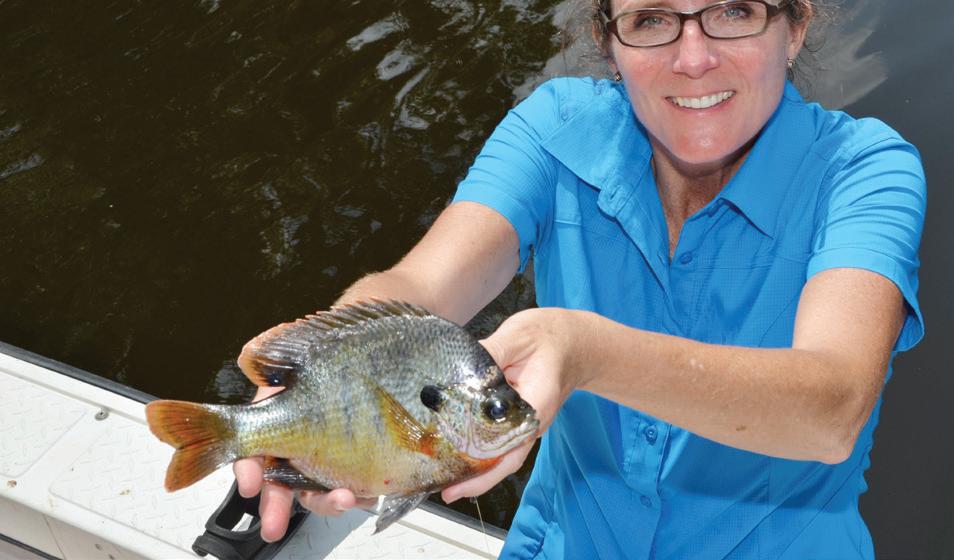



missed the sweet spot, nothing happened.
About the time we shot past where we wanted to be, the boat needed bailing again. We bailed the boat dry—or at least as dry as we could for something that resembled a noodle strainer with a motor—and hoped the old engine would crank again. Fortunately, it did. We ran the outboard upwind past the bug-laden bushes to make another drift. We repeated this effort many times that late spring afternoon until we grew tired of catching fish—and bailing.




Also called willow or shad flies, mayflies spend most of their lives underwater as nymphs. Called naiads in their aquatic form, the insects look somewhat like elongated or flattened crickets or a cross between a cricket and a shrimp.
When the weather turns warmer in late spring and summer, naiads sprout wings


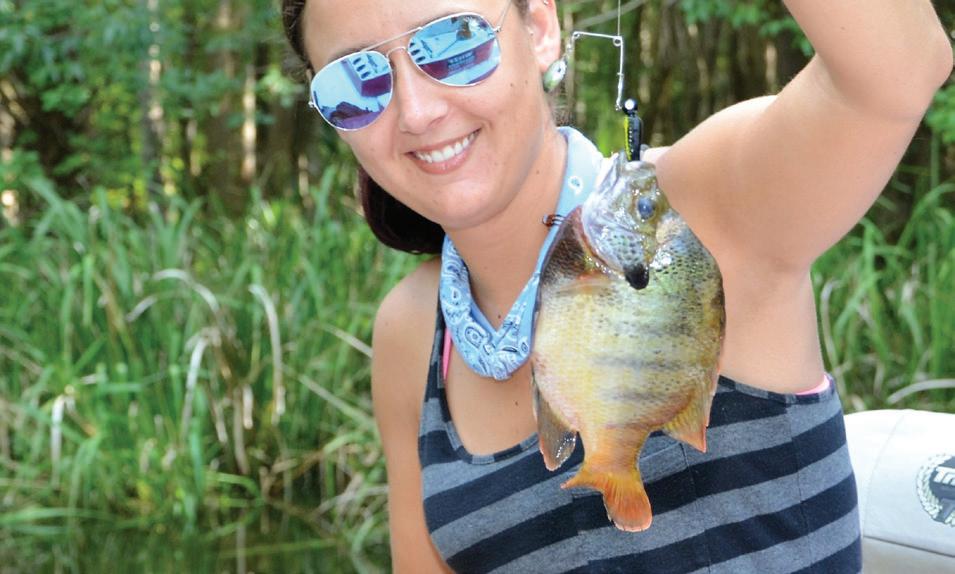



Ruth Sykes holds a bluegill she caught while fishing a river backwater. Small fish can provide big action.
Amy Gable shows off a bluegill she caught on a beetle spinner while fishing a river backwater. Anglers can fish beetle spinners many ways from the surface to the bottom.


and emerge from the water. After emerging from the water, millions of flies cling to tree branches, low bushes, reeds or whatever else they can find to dry their new wings before taking flight. Thousands inevitably fall into the water, attracting every fish in the area.



An adult mayfly resembles a giant mosquito waiting to bite. That scares some people. Fortunately, adult mayflies cannot bite anything. The adult flies don’t even have functional mouths, so they can’t eat, bite or sting anything. Mayflies belong to the insect order Ephemeroptera, which means “lasting only a day.” The winged adult form simply exists to procreate. They live just long enough to breed, if they make it that long. After mating, the flies die, adding more protein to the food chain.

Hatches—technically just bugs changing from aquatic nymphs into winged adults— normally occur in sluggish eddies or placid backwaters of freshwater systems. When they pop out as winged adults, the insects create massive swarms numbering in the millions or even billions of individuals. Sometimes, swarms grow so large that they show up on radar.
On July 3, 2020, a gigantic swarm appeared on National Weather Service radar 50 miles away and blanketed Burlington, Iowa. In June 2015, a hatch along the Susquehanna River near Columbia, Pennsylvania, grew so thick that police had

to close the bridge over the river because motorists couldn’t see. In 2014, a hatch on the upper Mississippi River near La Crosse, Wisconsin, reached an altitude of 2,500 feet. On radar, it resembled a significant rainstorm. Sometimes, northern communities use snowplows to push piles of dead insects off bridges so people can drive safely.
When flies fall on the water’s surface, they float. Copious amounts of free protein suddenly entering the food chain kick off a major feeding frenzy that attracts every fish around. Anyone who happens upon a hatch could load a boat with bluegills and other fish quickly—assuming they can stay in a good casting spot.
For the most fun, toss small poppers on light fly tackle. Floating insect imitations made of cork, foam, wood or plastic, often adorned with feathers and rubber “legs,” make excellent bream enticements. Some creations resemble crickets, grasshoppers or other creatures that bluegills love to eat.




Besides fly tackle, anglers can catch bream on other baits and lures. Many people fish with small beetle spinners around a hatch or hop jigs along the bottom.
Bass anglers can also benefit from a mayfly hatch. Some bass eat the insects, but larger bass gather to feed on swarming bluegills. For bass, fish crankbaits or spinnerbaits in bluegill colors or drag soft plastics under the bushes.


In a mayfly hatch, lure selection doesn’t matter as much as placement. Cast a temptation as close to fly-laden bushes as possible without snagging. If the bug hits the hot zone, something should grab it instantly. If it falls outside the sweet spot, don’t waste time. Make another cast. If the frenzy dies down, shake the bushes to make more flies fall into the water and reignite the frenzy or look for another hatching swarm.



Depending on the location, hatches in Louisiana might erupt anytime from late March through early November. The peak hits from late June to mid-September. Anglers never know exactly when or where a major hatch might erupt, but anyone lucky enough to find one in progress never forgets the experience. A bug hatch can turn an otherwise humdrum day into an incredibly memorable and productive occasion.


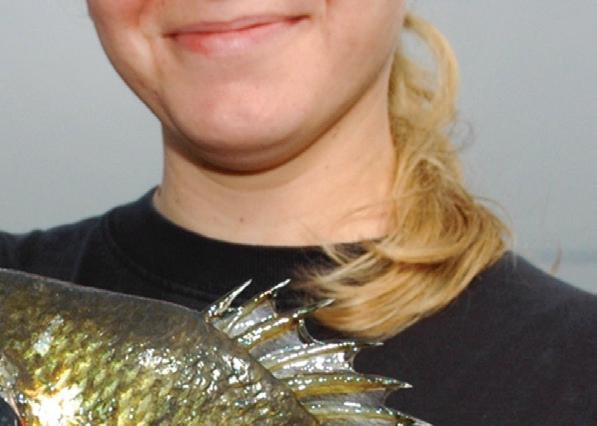
Rachel Delinski shows off a redear sunfish— or shellcracker—she caught. Shellcrackers feed mostly on snails and other shelled animals.
An angler compares a bluegill, left, with a redear sunfish.



State of Louisiana offers outdoor destinations for all





There’s a reason Louisiana is nicknamed Sportsman’s Paradise. And we’re not just talking about hunting and fishing, although those are major draws. Louisiana offers a slew of outdoor activities, including canoeing, kayaking, hiking, birding, biking and wildlife viewing. There’s even the chance to sunbathe on pristine beaches and swim in warm Gulf waters.
Birds and Beaches: Creole Nature Trail All-American Road
There’s something for everyone on the Creole Nature Trail, known as Louisiana’s Outback. There’s fishing, crabbing, hiking and birdwatching—as many as 400 bird species frequent the area. Also, the trail has one of the state’s largest populations of easily viewable alligators. Visitors can spot gators sunning themselves right alongside the road.
Exit Interstate 10 at Sulphur and check out Creole Nature Trail Adventure Point, where interactive exhibits explain the trail’s

wildlife refuges, rookeries, fishing opportunities and beaches where the trail hits the Gulf. Grab a map and head south.
The trail is a stopping point for thousands of migratory birds and millions of butterflies along the Trans-Gulf migration path. It’s routinely named one of the finest birdwatching spots in the nation. At the center of the migration path on the edge of the Gulf of Mexico lies Peveto Woods Sanctuary, a habitat run by the Baton Rouge Audubon Society.
The Creole Nature Trail includes three national wildlife refuges and one state refuge. The Cameron Prairie National Wildlife Refuge lets visitors explore a freshwater marsh and learn more in its visitors center. The 3-mile Pintail Wildlife Drive and half-mile boardwalk are ideal for birdwatching and other adventures.
For those wanting to see gators, the Rockefeller Wildlife Refuge offers the highest alligator nesting densities in the United States. There are many places to fish and crab throughout the


Adventure

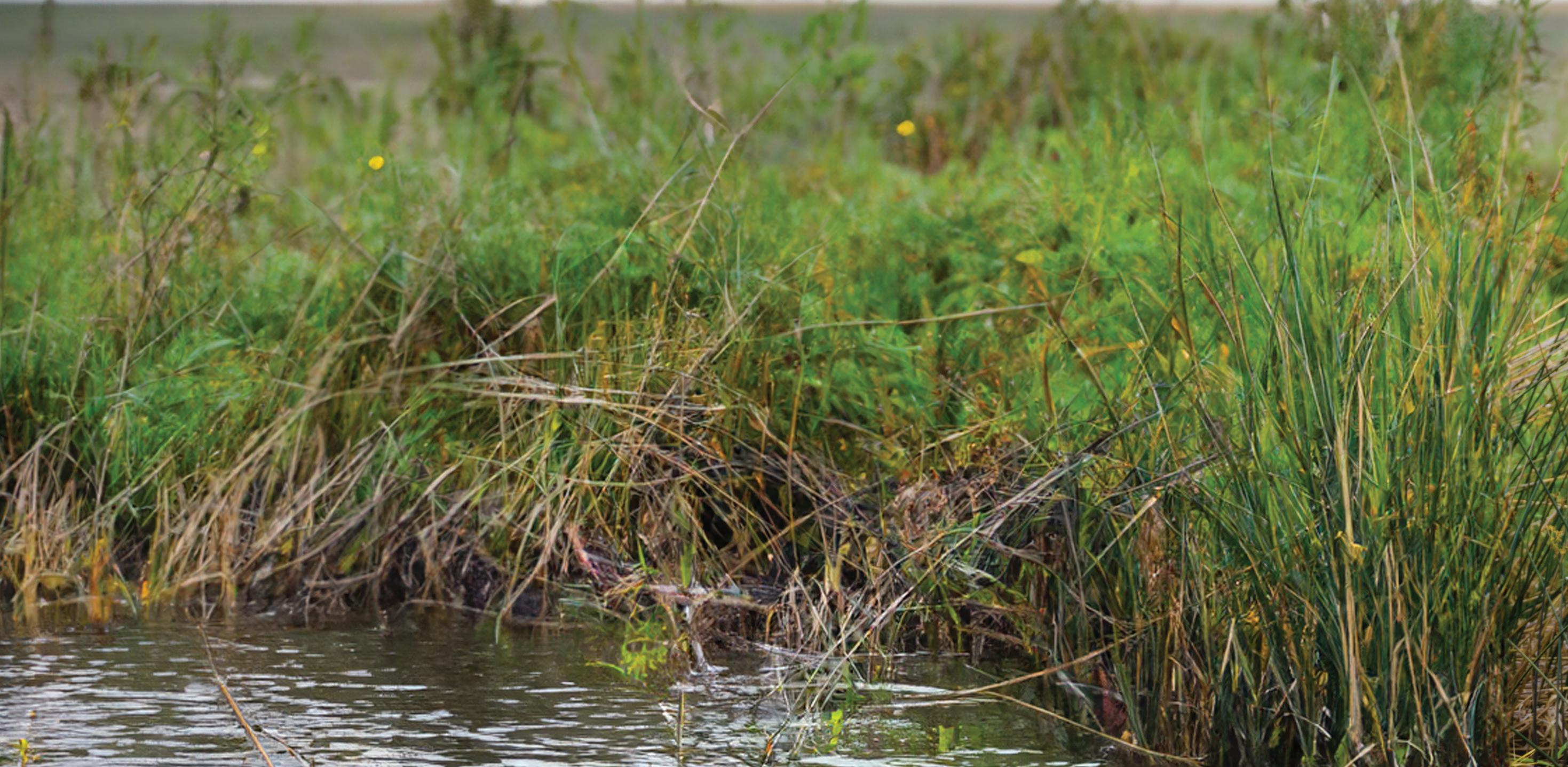





Adventure


region, and hunting opportunities include deer, geese, ducks, dove and other game.
At the bottom of the trail, at the south end of the loop, are 26 miles of accessible Gulf Coast beaches, such as Rutherford Beach and Holly Beach. Visitors can swim in Gulf waters, collect seashells or just relax in the quiet of the Louisiana coast.
Birds and Gators: Cypress Island Preserve, Lake Martin
This time of year, thousands of egrets, roseate spoonbills, herons and other birds flock to Cypress Island Preserve to nest. The birds love the cypress-tupelo swamp and bottomland hardwood forest in the 9,000-acre preserve on Lake Martin, owned by The Nature Conservancy of Louisiana.
The proximity to local crawfish and shallow water appeals, as well. Now is peak season to view the rookery, one of the largest avian sanctuaries in North America, so bring binoculars and a camera to catch chicks peeking out of their nests.











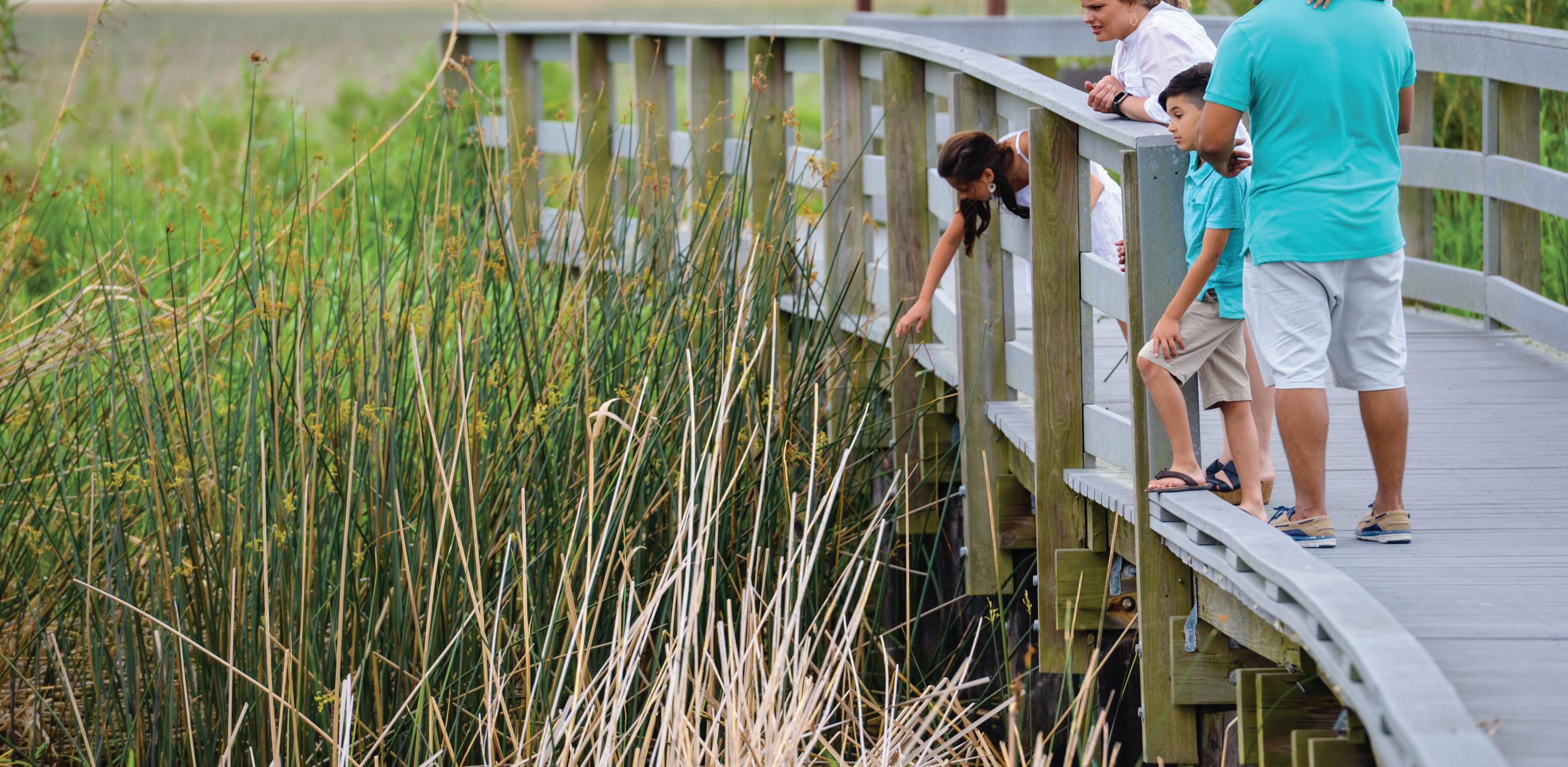

There are numerous places to pause along the Creole Nature Trail and explore the outdoors, from walking trails and boardwalks to Gulf beaches. PHOTO COURTESY OF VISIT LAKE CHARLES



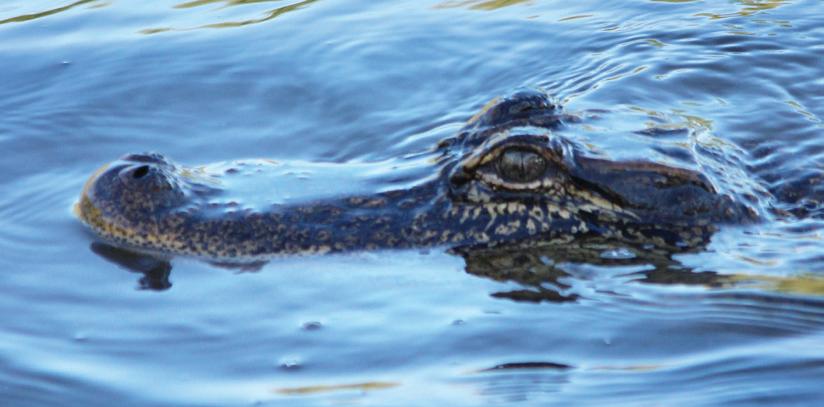



Alligators swim below the rookery, so it’s a great opportunity to view Louisiana’s resident reptile. According to Nancy Camel, author of “The Nature of Things at Lake Martin,” birds choose areas with alligators because they “ward off more predacious mammals such as raccoons, possums, minks and rats.”
Stop at the visitors center and view a handy map of the preserve with its walking trails and boardwalk. A good portion of the Rookery Road next to the water was closed after a flood, but it’s still walkable, says Jill Andrew, Cypress Island program and volunteer manager.
“The parish still maintains the road,” she says. “That makes it walkable. I tell people the Rookery Road’s now an extension of our trails.”
Another conservancy trail, this one strictly a walking trail, takes visitors halfway around the lake. But don’t wait until summer to explore. The trail closes around June 1 through August 31 for alligator nesting season, when the reptiles get especially protective.
“We keep an eye on it in August,” Jill says. “If we don’t see anything, we open the trail back up.”
Take a Hike: Mary Ann Brown Nature Preserve, Tunica Hills
A 110-acre preserve in Tunica Hills, only 40 minutes from downtown Baton Rouge and a short drive from the New Orleans area, allows visitors a chance to bask in its mixed pine-hardwood forest. But the 2 miles of hiking trails offer something unique to


Louisiana, says William deGravelles, director of land protection and stewardship for The Nature Conservancy of Louisiana, which owns and operates the preserve.
“During the glacial and interglacial periods, the Mississippi River would get enormous and would produce this enormous flood plain,” he says. “When the river receded, the winds picked up soil and dumped it on either side of the river, mostly on the east side.”
This loess, or sedimentary soil deposit, is responsible for the Tunica Hills, where the top of Louisiana’s “boot” touches Mississippi near the river. And it’s what makes Mary Ann Brown Nature Preserve so special. Louisiana residents will enjoy a rare opportunity to walk through rolling terrain.
In addition, there’s a chance to spot wildlife. Mary Ann Brown is home to the eastern chipmunk, whose southernmost range ends in Tunica Hills. Breeding and migratory species of birds rest here, as well as box turtles and a variety of snakes, William says.
The Nature Conversancy allows organizations working with children and nature to camp or use the pavilion. Visitors should know there are no restrooms, and the trails are not Americans with Disabilities Act compliant.
The preserve is open during daylight hours year-round.
Travel in Time: Poverty Point World
Heritage
Site, Pioneer
An enormous amount of soil was moved thousands of years ago to build a complex set of earthen mounds in northeastern Louisiana,

The sun sets on Toledo Bend Lake. PHOTO COURTESY OF TOLEDO BEND LAKE COUNTRY
Alligators may be spotted along the Creole Nature Trail All-American Road. PHOTO COURTESY CHERE COEN
Species like this great blue heron are common at the secluded Cypress Island Preserve at Lake Martin, only 20 minutes outside Lafayette. PHOTO COURTESY CHERE COEN

creating a unique settlement and culture along the Mississippi River floodplain.
Residents of this enclave also traded raw materials from the Southeast between 1700 and 1100 B.C. Because of its scale and unique cultural makeup, Poverty Point became a Smithsonian Affiliate in 2010 and a coveted United Nations Educational, Scientific and Cultural Organization World Heritage Site in 2014.
Why the mounds were created is unclear. The largest—now standing 72 feet high and likely 90 feet tall at its start—is shaped like a T. Believed to contain 390,000 tons of dirt, the equivalent of 30,000 dump trunks, the mounds were not the home of a chief.
“There’s no evidence of hierarchy on the site,” says Mark E. Brink Jr., park manager at Poverty Point. “There’s a lot of mystery here.”
Former owners—who gave the property its name—plowed the land for years, destroying much of the original plaza, but it appears timber posts were implanted in circles within the plaza, like a wooden Stonehenge—another mystery.
“We have direct evidence that these timber posts existed,” Mark says.
Visitors may enjoy the interpretive museum, with self-guided or guided tours. Special events are held throughout the year at this Louisiana state park. Nearby is Poverty Point Reservoir State Park, which offers overnight accommodations in cabins


overlooking the lake and within the woods, and fishing and wildlife viewing.
Cast a Line: Toledo Bend
Ideal fishing exists throughout Louisiana, from freshwater species to the bounty of Gulf waters. Toledo Bend, a top bass-fishing lake, is one of many hot spots. It was the first lake to rank No. 1 on Bassmaster Magazine’s 100 Best Bass Lakes list two years in a row. It all came about when enterprising folks dammed the Sabine River, and the lake filled up too fast—swallowing trees in its path. That’s why stumps remain under the lake’s surface today, making it imperative that boaters follow the marked canals. But those stumps are popular with fish, such as largemouth bass, bream, crappie or sac-a-lait, catfish, and white and striped bass.
As you explore the vibrant landscapes and diverse ecosystems of Louisiana, from the untamed beauty of the Creole Nature Trail to the serene tranquility of Mary Ann Brown Nature Preserve, one thing becomes abundantly clear: Louisiana is truly a state of adventure. So, pack your binoculars, lace up your hiking boots and embark on a journey through Louisiana's rich tapestry of natural wonders. After all, in this paradise, every trail leads to a new discovery, and every moment is an opportunity to connect with the great outdoors.

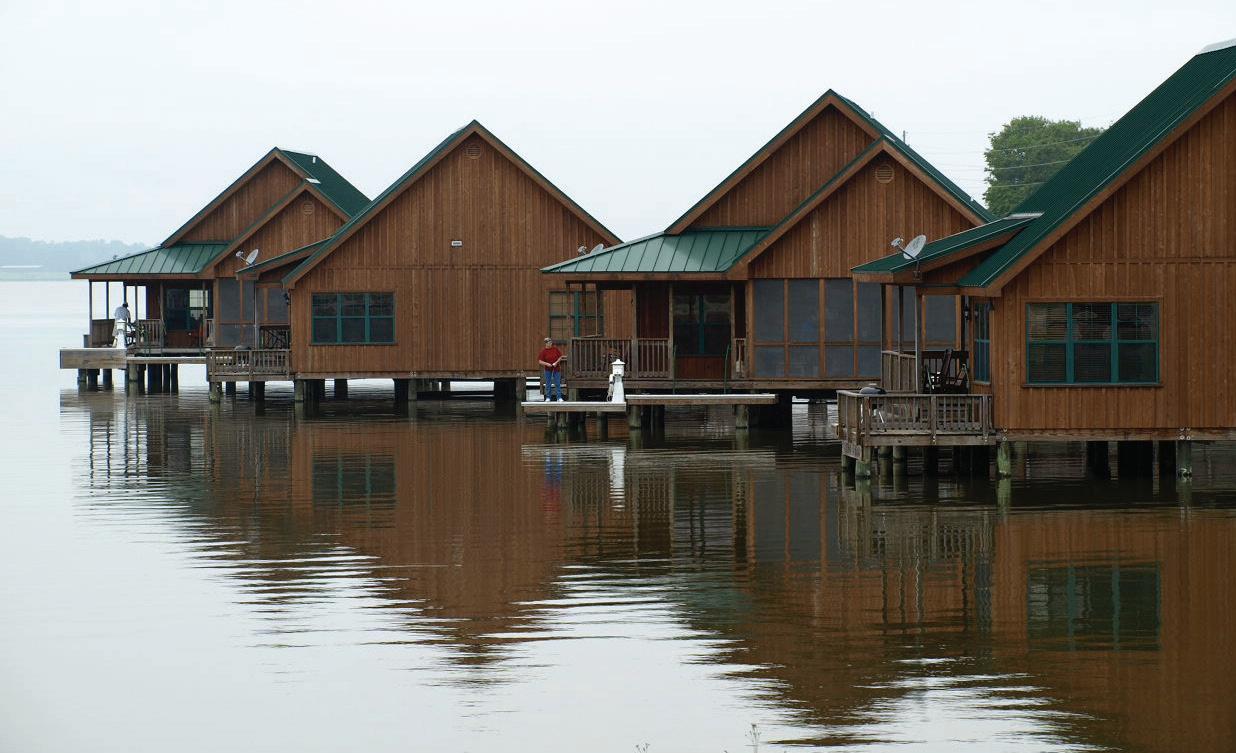

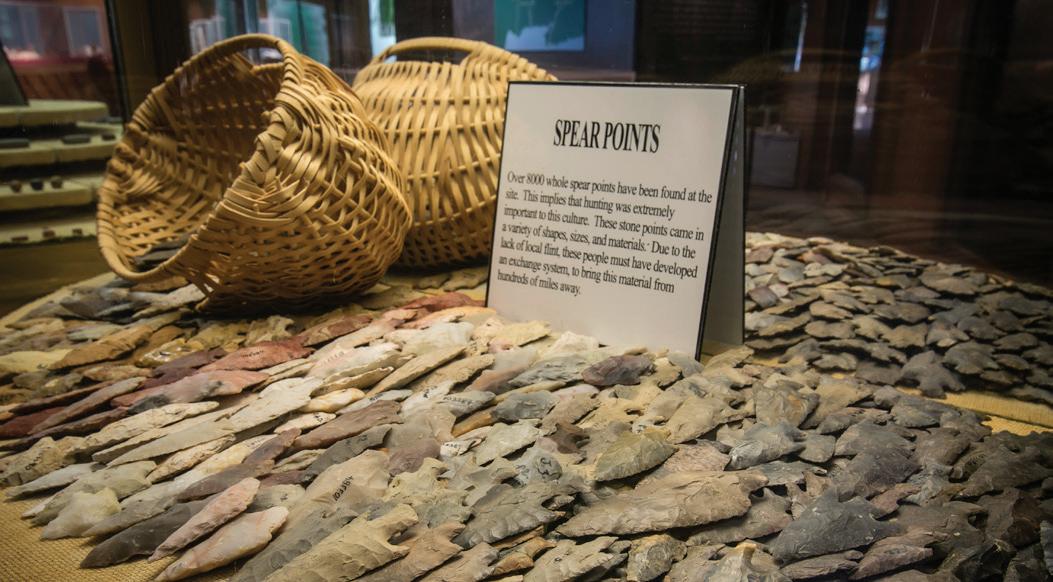




Visitors may dock their boats at the lakeside cabins at Poverty Point Reservoir State Park. PHOTO COURTESY OF LOUISIANA STATE PARKS
There is fun for the entire family at Toledo Bend. PHOTO COURTESY OF TOLEDO BEND LAKE COUNTRY
Because of its unique cultural makeup, such as the massive mounds created here, Poverty Point State Park became a coveted UNESCO World Heritage Site in 2014. PHOTO COURTESY OF LOUISIANA STATE PARKS
Toledo Bend is a hot spot for bass fishing. PHOTO COURTESY OF TOLEDO BEND LAKE COUNTRY
































We Need to Know
Are you on a life-support system?
We are updating our records for life-support equipment needs and would appreciate your cooperation in providing this information.
This must be done on an annual basis to maintain quality service and perform important maintenance or construction of our electric distribution system. As members know, preventing outages due to weather conditions or other uncontrollable factors is impossible. Members who require life support should keep their account up to date.
In an effort to minimize the inconvenience to any member who relies on life-support systems or equipment, we need to know who you are and where you are located. We also need to be advised if at any time any changes are made and if the system or equipment is removed.
We appreciate your cooperation in this matter.
If someone in your home is dependent on life-support equipment, fill out this form and return it to BECi or call our office at 800-367-0275 to update your account.

LIFE SUPPORT SYSTEM INFORMATION
Name on account: ___________________________________________________________________
Account number:
Name of person(s) on life support: _______________________________________________________________
Address: ___________________________________________________________________________________
Phone number: (home) ___________________________________ (cell)________________________________
Type of support system: _______________________________________________________________________
Do you have an emergency standby generator to operate the equipment? Yes ______ No _______
BECi must also have a letter from your doctor on letterhead stating your condition and equipment that needs electricity. Once we receive this form and the official letter, you will be added to the priority list.







































































A REEL FUN TIME
Sunrise Catfish Farm provides entertainment for
fishing
enthusiasts
By EmmaLee Tingle
South of DeRidder, down Milton Schmidt Road, sits a 74-acre farm started by the road’s namesake. The farm has become an agritourism hotspot in Beauregard Parish.
Sunrise Catfish Farm is a catch-and-keep catfishing operation with several stocked catfish ponds. The farm has a rich history in Louisiana agriculture and the Schmidt family legacy, and it didn’t
start with fish.
Milton Schmidt farmed dairy cattle and sold dairy products commercially for two decades until the mid-1990s. During that time, the local dairy industry declined as large commercial dairy operations in the Midwest made it hard for small farms to compete. Account No. 165673-001
As farmers do, Milton and sons Brian and Kevin started researching ways to diversify the family farm and keep it
successful. That research piqued their interest in a new area of commercial agriculture production: catfish farming.
In 1995, the first two catfish ponds were added to the farm. For the next six years, the Schmidts raised and sold catfish commercially while continuing the dairy operation.
In 2002, the family decided to sell the cows and pursue the catfish farm full time. Around the same time, the Schmidts decided to transition from a commercial catfish operation to a complete pubic fishing service, where visitors fish on their own, keep what they catch and pay by the pound.
Today, the farm is owned by Brian Schmidt. Milton died in 2018. Account No. 16628-001
Brian’s son, Kendall, is a third-generation Schmidt farmer who helps run the day-to-day operations at Sunrise Catfish Farm. The current farm setup consists of four catfish ponds, ranging in size from 2 to 8 acres. The farm opens to visitors for the season when the water temperature nears 70 degrees, which is when catfish begin to bite.
Typically, the season runs from February through December.
Visitors don’t need a fishing license, and there’s no limit to what a person is allowed to catch at the farm. Guests are required to keep all catfish caught, and the farm offers a variety of options for cleaning and packing fish.
For $3.15 per pound, visitors can take the day’s catch home and clean the fish. For $3.65 per pound, fishermen can have the fish cleaned and packed on ice. And for $4.10 per pound, Sunrise Catfish Farms employees will clean the fish, strip them into filets and pack them on ice.
“Visitors simply pick a spot to fish, then bring their catch to the weigh station,” Kendall says. “We do ask guests to keep what they catch. The mortality rate of our catfish goes up if we allow catchand-release, and people can damage a lot of fish in the ponds that way.”
The catfish ponds are stocked by a farm in Dumas, Arkansas. The truck that delivers catfish to Sunrise Catfish Farms can haul 26,000 pounds of catfish, which can be divided among up to eight tanks on the truck. This allows the farm to divide the load among different ponds and know exactly how many pounds of fish are released into each one.
Visitors are always made aware of which ponds are currently open and stocked when they arrive at the farm.
“We keep the fish biting because we keep the ponds wellstocked,” Kendall says.
The farm also boasts a self-serve bait shop on-site, in addition to a snack shop. In the bait shop, visitors can buy various kinds of bait, hooks, weights and floats. Guests can also rent rods and reels, nets and ice chests. Account No. 113227-001
“We have everything a person needs, or they can feel free to bring their own gear,” Kendall says.
In the snack shop, fishermen can find a wide variety of snacks and drinks, including homemade ice cream. On Saturdays, a full menu of hot meals is available for purchase.
The Schmidt family welcomes solo fishermen all the way up to large groups. The farm caters to families, nursing home outings,
BEAUREGARD ELECTRIC

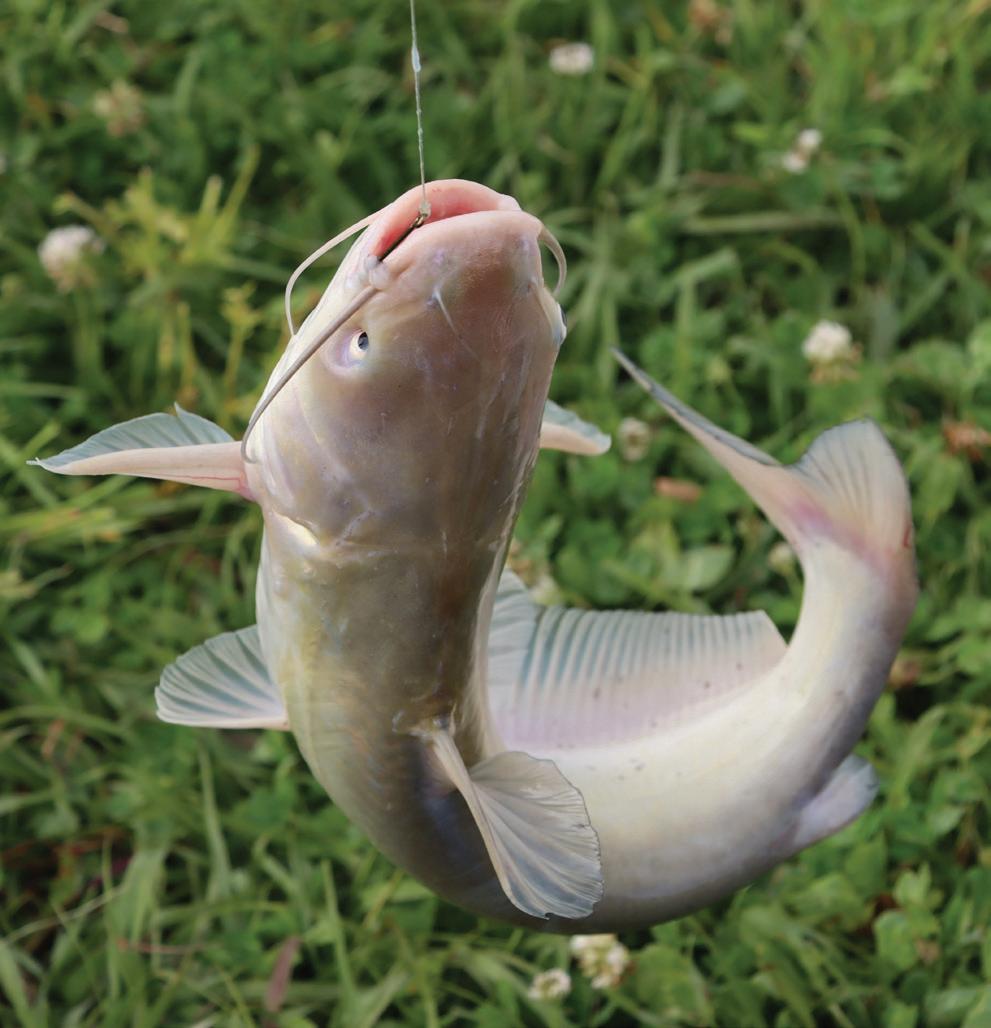
churches, family reunions and groups of any size. For large groups, Kendall recommends calling ahead so the farm can plan for adequate staffing. Account No. 164346-001
Sunrise Catfish Farm is open 8 a.m. to 5 p.m. Monday through Friday, and 8 a.m. to 6 p.m. Saturdays. The farm is at 155 Milton Schmidt Road in DeRidder.
Sunrise Catfish Farms is ready and waiting for fishermen of all ages and groups of all sizes. Visitors have several more months of fishing season available, and guests are guaranteed a real good time. n
For more information, visit www.sunrisecatfish.com. The farm’s Facebook page stays up to date with information and events. The farm’s main telephone number also has a recorded message with updated visitor information: 337-462-6990.
ABOVE and BELOW: Sunrise Catfish Farm offers a day of fishing and fish cleaning services. PHOTOS COURTESY OF BECI




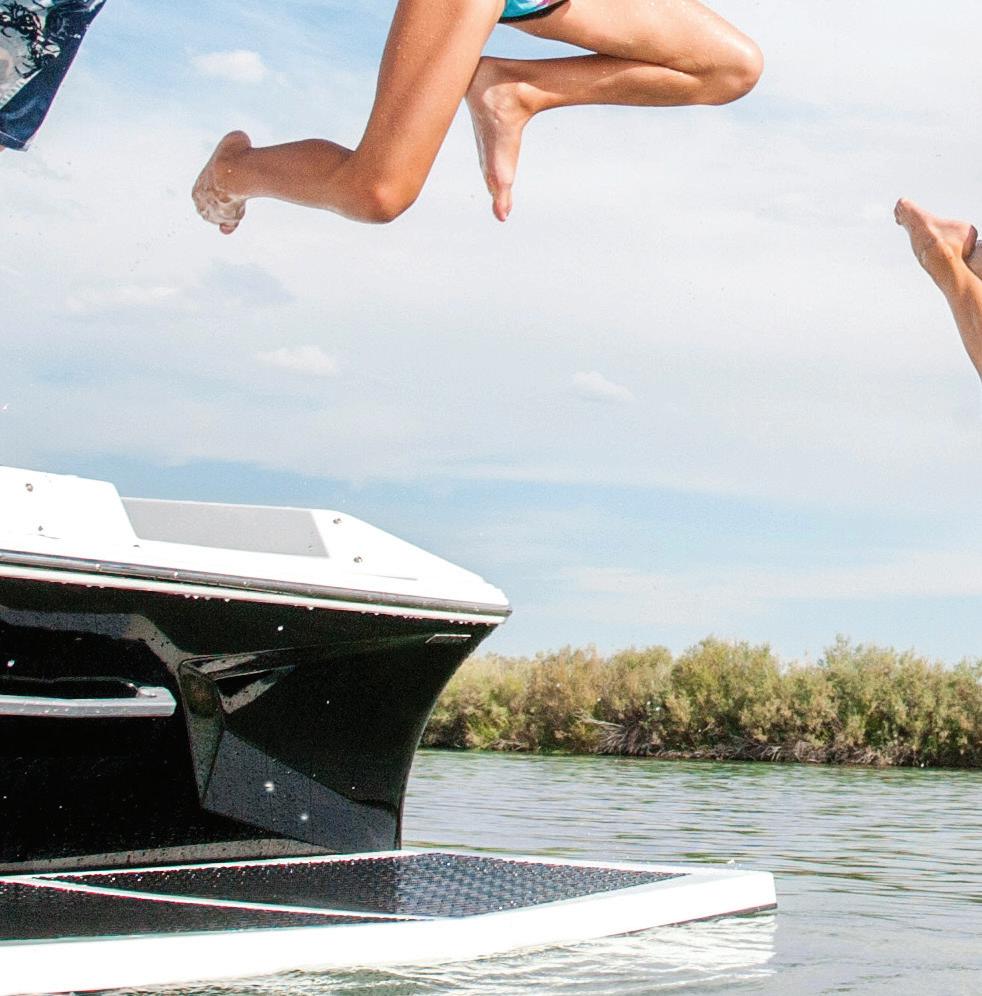

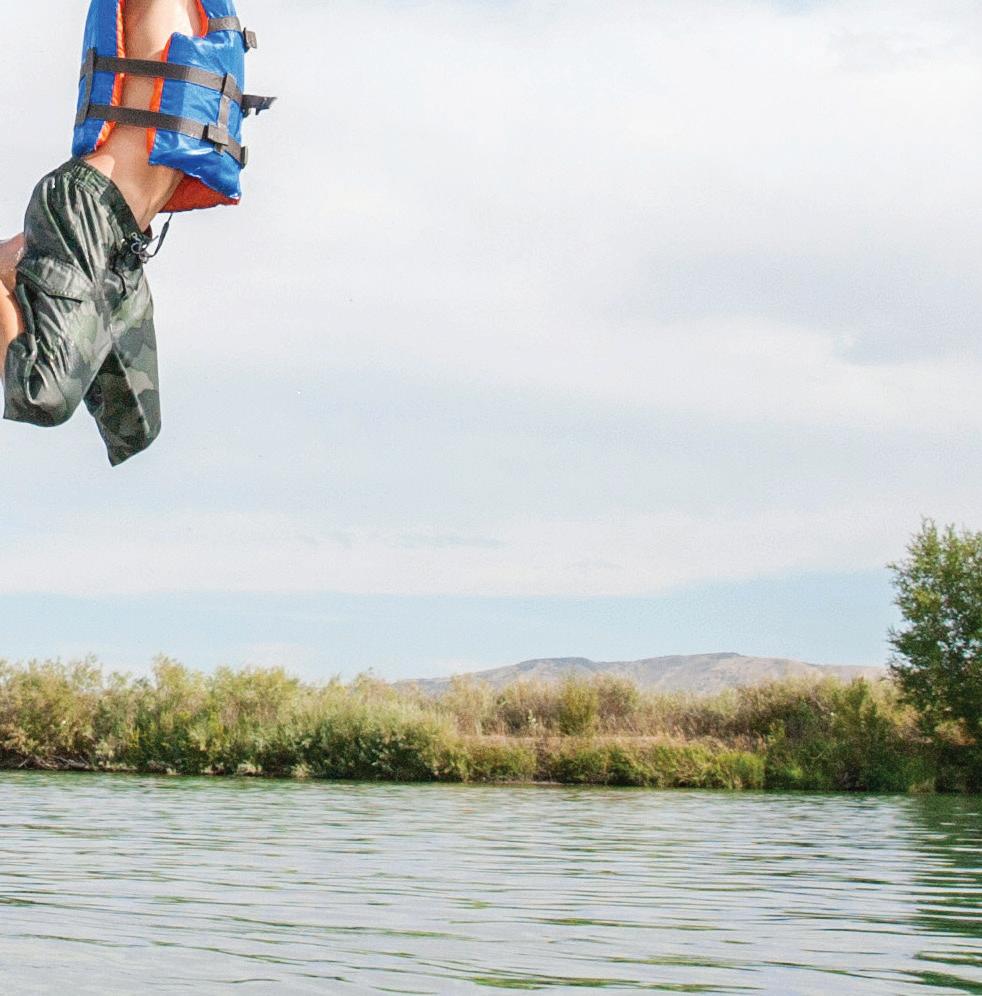


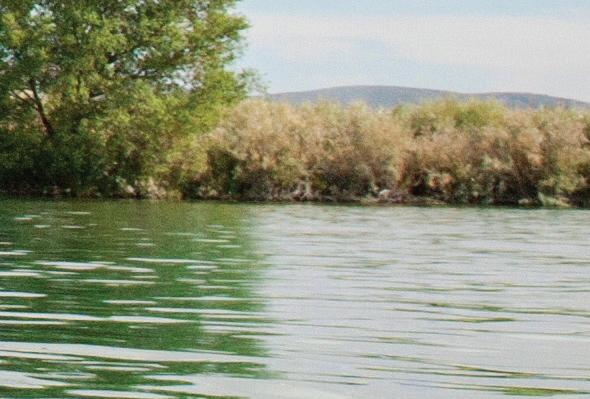
Under the Surface


Know the dangers lurking in the water before you take the plunge
By Nina Todea

inspect boats and stay up to date on maintenance.



With the long-awaited warmth of summer arriving soon comes the desire to spend our days outside, whether swimming, boating or camping. Although we’re far more unplugged outdoors, many electrical hazards still accompany these leisurely summer activities—and they often lurk beneath the surface.
paralysis and drowning. Even the best swimmers will feel their bodies freeze as they lose muscular control.

Water safety is more than just boating speeds and life jackets. Electric shock drowning, dubbed the “silent killer,” occurs when faulty wiring sends electric current into a body of water. The current then passes through the body and causes paralysis, which can ultimately result in drowning.
This current isn’t nearly as visible as a bolt of lightning. According to Electrical Safety Foundation International, as little as 10 milliamps of current—1⁄50 the amount used by a 60-watt lightbulb—can cause

Often misclassified as drowning, ESD injures and kills people every year, whether it happens around a dock, or in a pool or hot tub. Unfortunately, there is no ESD statistics database, and—partly due to inaccuracies in reporting—many people are still unaware of the threat.
“Most people are unaware because there is no visible warning to electrified water,” says ESFI President Brett Brenner. “Without that visual, they are unaware of the dangers of electrified water.”
Boating and Marina
Just like your home, having your boat inspected regularly by a licensed electrician is critical. Familiarize yourself with the electrical system so you can identify and correct any potential hazards.
ESFI encourages boat owners to routinely
Ground fault and equipment leakage circuit interrupters—both safety devices required at marinas—should be tested monthly. A leakage test determines if electrical current is escaping the vessel.

In an emergency, an informed owner who knows where the main breakers are on the boat and the shore power source can respond quickly and effectively.
Alongside the safety of your boat’s electrical system, make sure all boat operators and swimmers understand the hazards so everyone works to keep them at bay. Never allow swimming near the boat, marina or launching ramp. Residual current could flow into the water from the boat or the marina’s wiring, potentially putting anyone in the water at risk of ESD.
Marina owners should do their part, too.
“Plan annual safety events at your marina where owners can learn about boat and


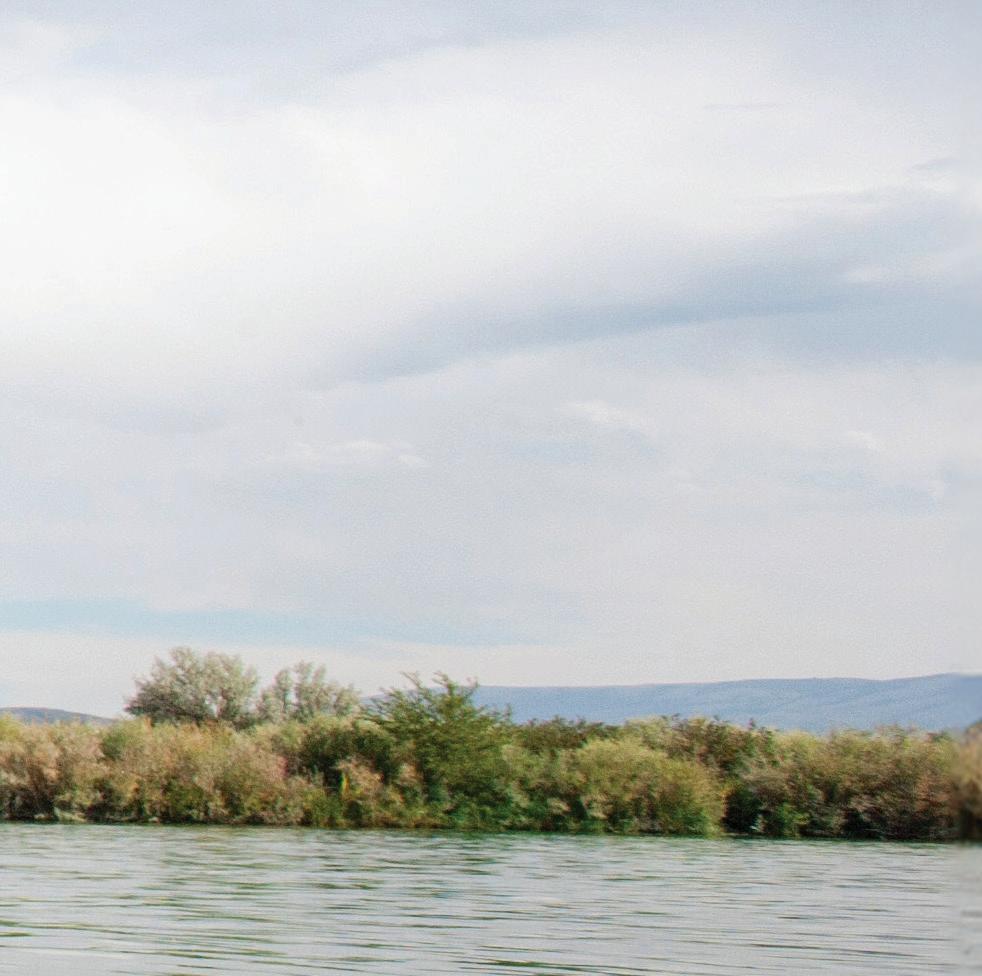

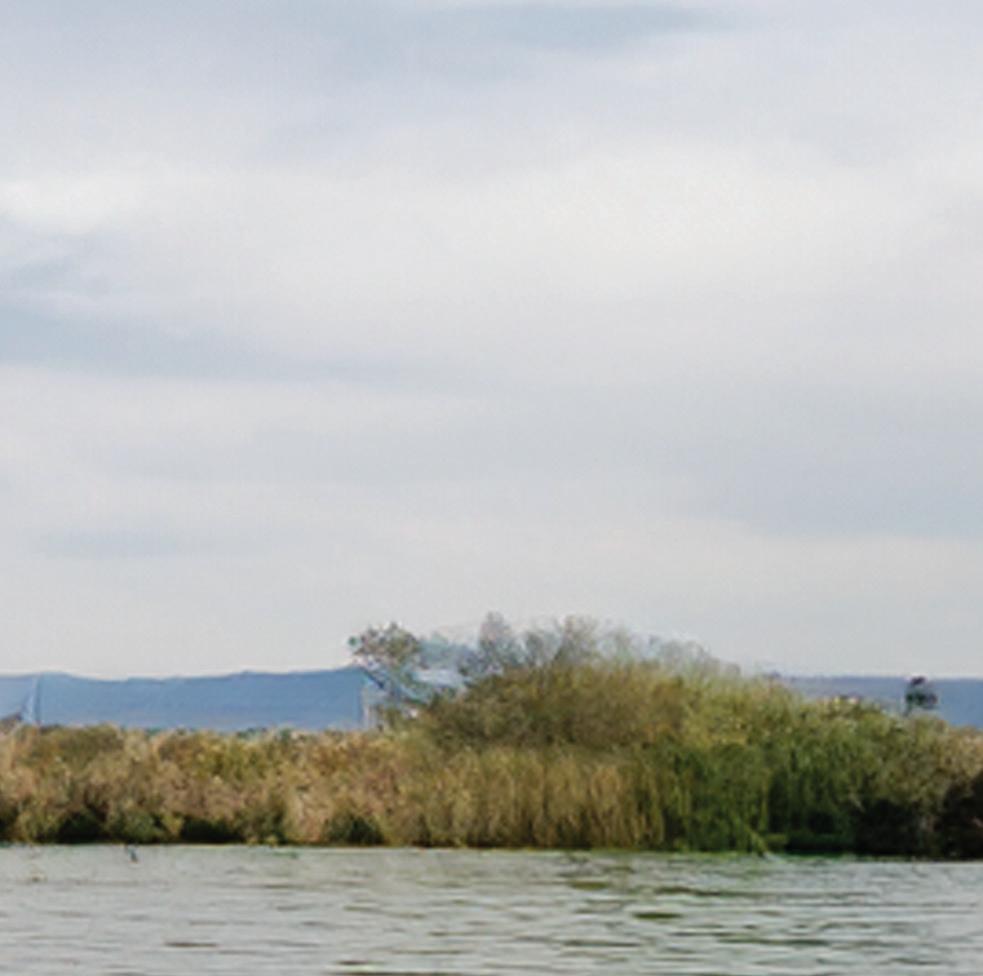

dock electrical safety and have their boats inspected by licensed electricians,” Brett says.
Home Recreation
Pools and hot tubs can be just as dangerous.
In 2020, a 15-year-old boy was electrocuted after touching exposed wire in a Texas hotel pool that had failed multiple inspections, according to news reports from the Harris County area.
Faulty pool lights, old wiring or even electrical equipment—such as pool heaters, vacuums, pumps or extension cords—can cause electricity to flood a pool or hot tub, resulting in serious injuries or fatalities.

You suspect a swimmer has been shocked. What do you do?
A telltale sign of electric shock drowning is the tingling that occurs when current passes through the body. But how can you tell if a swimmer is a victim of ESD if you’re not in the water with them?
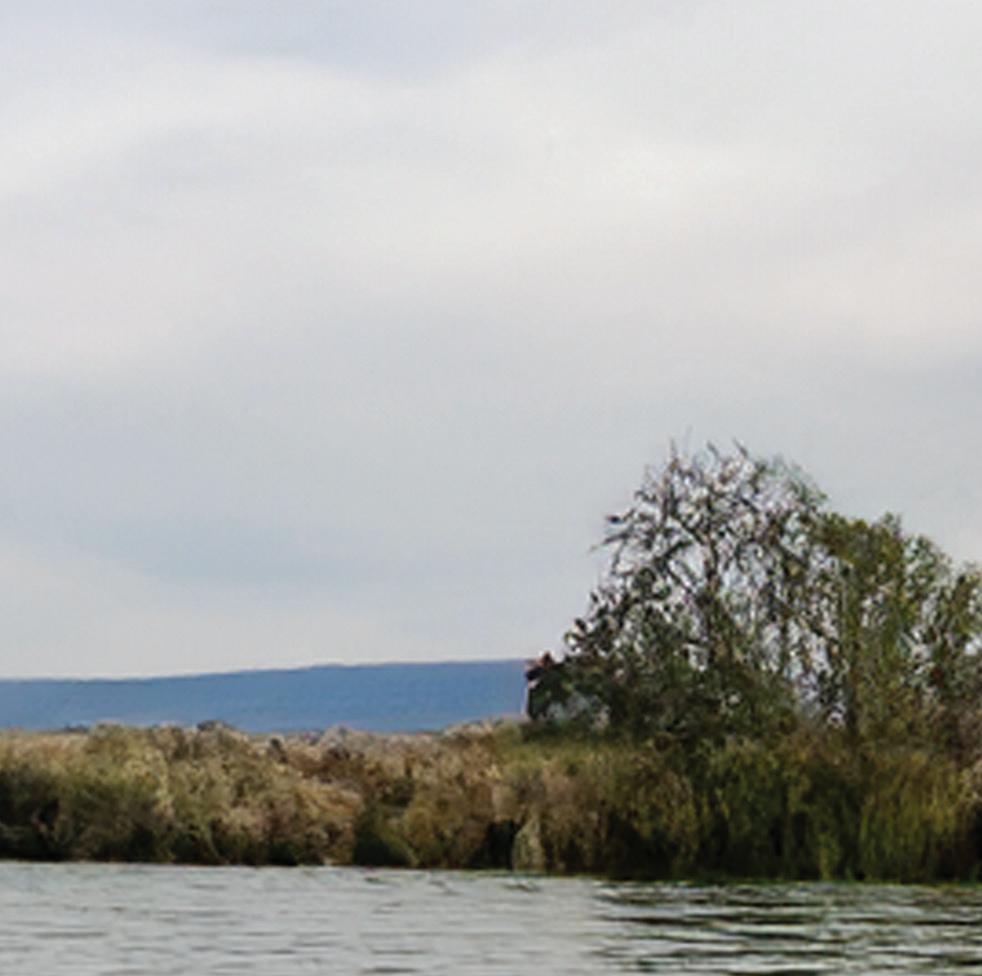
within 10 feet of a swimming pool. When practical, use battery-operated appliances near swimming pools.
• When you leave the pool, don’t touch any electrical appliances until you are dry. Never touch any electrical appliances when you are wet or standing in water.
Camping

Water safety outdoors isn’t just about bodies of water—natural or artificial. Campers should also be cautious of rain when packing electric camping materials or traveling in RVs that hook up to power poles.
A swimmer exhibiting signs of ESD can be visibly panicked and attempting to swim away from the electrified area, or they may be motionless. If you suspect someone is being shocked, do not jump in. Chances are you will be shocked, too. Instead, follow these tips to bring everyone to safety:
Cut off all electrical power to the area. Knowing where the circuit breakers are is important to act quickly in an emergency.


Call 911 immediately. You want a medical professional to assess the situation and administer CPR if necessary.


Electric shock drowning at home often results from failing to install the correct protective devices. All underwater lighting circuits and lighting around pools, hot tubs and spas should have GCFI protection, as should all electrical outlets within 20 feet of a pool.
Safe Electricity recommends pools and decks be built at least 5 feet from all underground electric lines and at least 25 feet from overhead electric lines. To locate underground electric lines, call 811 before you dig.
Follow these tips from Safe Electricity to keep your family and friends safe:
• Do not put electric appliances

Always err on the safe side, whether you’re experiencing a light rain or a torrential downpour. Before connecting to or disconnecting an RV from a power pole, switch off the breaker. When you’re hooked up, make sure to use a dry, nonconductive item to turn the breaker back on. Doing so can also protect circuits within your camper.
If you’re unsure, ask a fellow traveler. If you’re parked in an RV park, there could be another camper willing to help.
The 2017 National Electrical Code requires marinas and boat docks to post electric shock warning signs where electricity is used near water; many campgrounds also have warning signs.
If the swimmer is still mobile and can swim toward land or exit the pool, make sure there is an area where they can exit the water without using a metal ladder. If the swimmer cannot swim to safety, throw them a life ring or extend a carbon fiber rod, such as a fiberglass rescue hook. Any lifesaving efforts should be made with an insulated device.

“While you cannot prevent individuals from acting on their own accord, posting signs prohibiting swimming, as required by the 2017 NEC, is an easy way to help prevent ESD,” Brett says.
However, the responsibility does not solely fall on these signs, Brett says.
Swimmers, boat operators and marina owners should all be aware of electric shock hazards and how to prevent them.
“Unknowingly, many swimmers and boat and marina operators place themselves in the face of danger,” he says. “This innocent act of fun can turn tragic. Raising awareness among swimmers and marina and boat operators can help prevent ESD or other electrical injuries while out on the water.”

ADOBE STOCK PHOTO BY LUGOSTOCK





